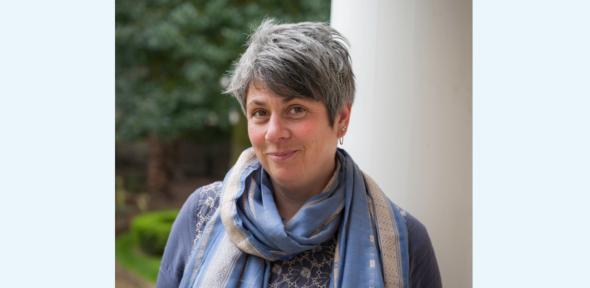
The Sedgwick Museum of Earth Sciences, the oldest of the University of Cambridge museums, has appointed its first full-time director.
Dr Liz Hide, previously the University of Cambridge Museums Officer and an independent consultant specialising in museum strategy and advocacy, will provide strategic leadership for the museum, enabling it to provide greater support for its research and teaching activities through its collection of more than two million specimens, which has been described as a ‘national treasure'. She will also enhance the contribution it makes to student teaching and learning, and build its public audiences. She takes up her role on 1 January 2019.
The Sedgwick Museum, part of Cambridge’s Department of Earth Sciences, is home to more than two million fossils, minerals and rocks, taking visitors on a 4.5 billion-year journey through time, from the meteoritic building blocks of planets, to the thousands of fossils of animals and plants that illustrate the evolution of life in the oceans, on land and in the air.
The museum’s most well-known specimen is ‘Iggy’ the Iguanodon, a cast of one of the extraordinary ‘herd’ of dinosaur skeletons dating from 140 million years ago found in Belgium in 1878. Recent research on the skeleton by Dr David Norman, a previous director of the Museum, has shown that Iguanodon would have walked on all four legs, rather than stood upright as 19th century experts believed.
The Sedgwick is visited annually by nearly 150, 000 people, including more than 5000 school children, and is a major teaching and research resource in the Department of Earth Sciences.
“I look forward to using the Museum’s internationally important rock, fossil and mineral collections as the starting point to really make a positive difference for people, whether they are researchers, students, or members of the public,” said Dr Hide. “With global issues and concerns such as climate change, fossil fuels, fracking and biodiversity loss, the museum will be a place where people can explore and discuss the earth sciences in a way that is directly relevant to their lives.”
Dr Hide will also be developing the distinctive contribution that the Sedgwick Museum can make to the University of Cambridge Museums consortium. Through funding from Arts Council England, the eight University museums and collections work collaboratively to enable more people to enjoy and engage with these outstanding collections and Cambridge’s leading-edge scholarship.
“I am delighted to see Dr Hide join us to lead the Sedgwick Museum of Earth Sciences team forward,” said Professor Simon Redfern, Head of the Department of Earth Sciences. “Her extensive experience in the museum sector is invaluable, as the Museum brings our world-leading Earth Sciences research to many more people, from students and other researchers to the visiting public.”
“Our museums and collections are central for our research and teaching, but they’re also an important resource for our community,” said Professor Eilis Ferran, Pro-Vice Chancellor for Institutional and International Relations, and Chair of the General Board Museums Committee. “Our museums and collections are for everyone, and we want to enable more people to engage with our collections, expertise and research.”
